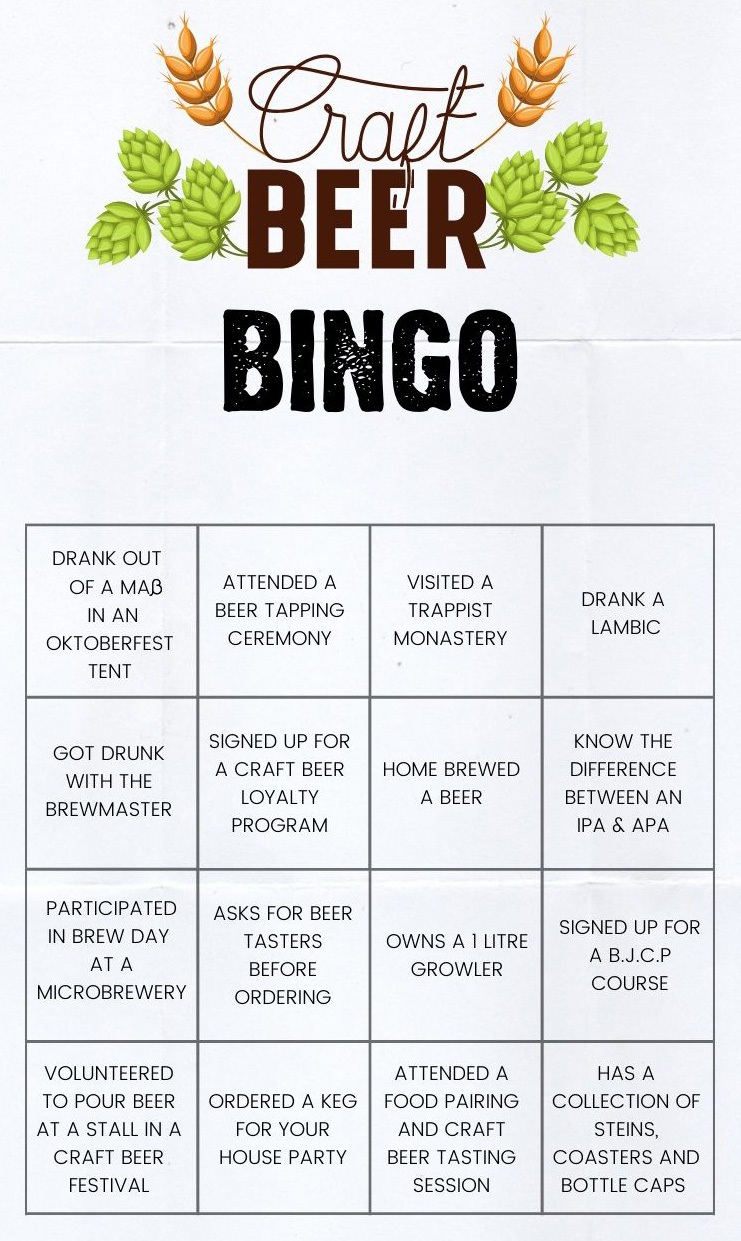Test your beer snob quotient, learn how to appreciate and judge a beer (without being condescending), and become a beer evangelist
Do you talk about beer more than your family is comfortable with? Do your thoughts wander beyond what is at the bottom of your pint? Are you a brewery fanboy/fangirl who spends copious amounts of time talking and drinking with brewers? If you answered yes, to any of the above, there is a chance you are a beer snob and you don’t even know it.
Beer snobs are an interesting lot. Similar to wine sommeliers or coffee connoisseurs. However, beer snobs cannot be clubbed into one bucket and their snobbery ranges from the harmless beer advocate, to the insufferable beer nazi.
Beer Bingo: Discover if you are a Beer Enthusiast, Beer Believer or Beer Evangelist.

Your score:
0: Don’t fret, your journey begins today
1-4: Beer Enthusiast
4-8: Beer Believer
8-12: Beer Evangelist
12-16: Beer Cicerone
Judge your beer, and understand what sits in your glass.
Here’s a one-on-one, practical session you can enjoy with your beer.
You will need:
a. A pint of your favorite ale/lager/stout/porter/saison/sour
b. A clear glass/mug
c. Your beer appreciation senses - sight, smell, sound, touch, taste, mouthfeel (and a sense of humor).
Resist the bottoms up, and let’s try these few steps together. Remember, beer is a democratic beverage and everyone’s opinion is important, there is no right answer, just the most popular.
Warning: Doing this with sober friends might make you appear arrogant. People might also refer to you as obnoxious.

Appearance
Q1. Observe the beer as you open it and pour it. Is it clear? Is it cloudy?
Most beers are filtered and tend to be clear. However, unfiltered beers are cloudy with the yeast still inside the beer. It’s alive! Most Witbiers, Weissbiers and Hefeweizens are cloudy.
Q2. Look at the beer. What color is it? Is it pale yellow, light amber, rich brown or pitch black?
A2. Color has nothing to do with alcohol percentages. The color of the beer is determined by the color of the malt. So darker malt results in darker beers, and pale malt results in lighter colored beers.
Q3. How does the head look? Does it have a good & lasting head? Do you see bubbles rising to the top?
A3. Bubbles and head are a result of carbon dioxide. The head or frothy layer on the top of the beer should be lasting and should not disappear too quickly. Stouts generally use nitrogen for carbonation resulting in a creamy head.
Aroma
Q4. Smell the beer. What is the smell that immediately stands out? Do you smell hops? Do you smell caramel-like sweetness? Do you smell fruitiness? What kind of fruit would you think smells like that?
A4. Sweet - denotes a strong malt presence
Sour/Tarty - means beer could be a sour style of beer like a Gose. If not, then the beer could be infected
Roasty - Beers that are derived from roasted grains
Fruity - Smell is often characteristic of an ale
Hops - Gives an earthy, herbal, flowery or citric feel
Yeasty/spicy - Smell is common in Wheat Beers and Belgian Ales
Flavor
Q6. Taste the beer. Let it coat your tongue and mouth. Swirl it around. What are the dominant flavors? Take another taste and try to narrow down the flavour.
A6. Bitterness - Hops add bitterness to the beers. Focus on the bitterness - is it woody, earthy, piney, fruity, herbal? Is it harsh and lingering, sticking to the back of your throat.
Sweetness - Sweetness usually comes from the malt - What kind of sweetness - like a malted milkshake, grainy, caramelly, creamy?
Sourness & saltiness - These flavor profiles come from the special yeast that are added in the brew - Is it tarty, yeasty, lemony, tangy? In some styles of beer like Berliner Weisse and Gose, saltiness is imparted from the water (or even added salt).
Herbal/Spicy - Many beers have added spices like orange peels, coriander, cloves, nutmeg in their holiday brews, to impart medicinal qualities and holiday flavor.
Mouthfeel
Q9. Swirl the beer around in your mouth. How does it feel? Is this a light beer that you could take big gulps of? Is it a heavy beer that you'd want only a sip of?
A9. Try and understand the body i.e. weight and thickness of the beer and categorise them into lean bodied, medium bodied and full bodied.
Q10. Think for a minute. Did you like this beer? Have you tasted anything like this before. What things impressed you, or what things about it would make you hesitate to drink another? Do the flavors have a good balance? Or does one flavor overpower the others. Did you find it balanced and crisp?
A10. The possibilities are endless. And yes, there is no right answer.
Finally, rate your beer on drinkability
a. Naah, that don't impress me much
b. Wow, I want more of this divine brew.
A cheat-sheet for every aspiring Beer Cicerone (pronounced sis-uh-rohn).
● Abbey – Strong, fruity, spicy, aromatic, complex
● Altbier – Bronze-colored, snappy bitterness, full malt flavor
● Bitter – Fruity and racy, subtle, low carbonation, robust hopping
● Dubbel – Dark, fruity, complex, raisiny, spicy
● Dunkel – Dark, malty, bready, moderate bitterness
● Hefeweizen – Wheat beer with yeast, light-bodied, spritzy, clovey, banana like.
● IPA – “India Pale Ale,” amber, strong, dry, robust hop bitterness and aroma
● Kölsch – Very pale gold, bready, lightly fruity, restrained bitterness
● Märzenbier – Amber, bready, round, malty, caramelized, medium-bodied
● Mild – Dark, lightly hopped, caramelized, raisiny, light-bodied
● Oktoberfest – Should be the same as märzenbier but sometimes paler
● Pale Ale – Amber, snappy, dry, fruity, hoppy, with some caramel flavors
● Pilsner – If genuine – golden, dry, sharply bitter, flowery, bready, snappy
● Saison – Dry, sharp, spicy, complex, refreshing, hoppy, slightly strong
● Scotch Ale – Dark, sometimes strong, malty, full-bodied, restrained bitterness
● Tripel - Pale, strong, dry, fruity, complex, spicy, rummy, spirituous
● Witbier – Belgian wheat beer; hazy yellow, light-bodied, citric, spritzy, slightly tangy
● Stout – Black, coffee-ish, chocolatey, can be dry or sweet, strong or modest
● Porter – Very dark, chocolatey, coffee-ish, caramelized, hoppy
● Rauchbier – “Smoked beer”; smoky flavors and aromatics, juicy, caramelized
Source: The Brewmaster’s Table by Garrett Oliver
Garrett Oliver is an American brewer and beer author from New York City. Since 1994, he has worked as the brewmaster at the Brooklyn Brewery
If you’re looking to drink your beer for reasons other than inebriation, we hope this over-generalized, mildly-researched guide gets you one step closer to becoming an extreme beer enthusiast, a beer evangelist or a professional cicerone. Or at least one step closer to a better beer selection. Don’t forget to invite us to your favorite watering hole for your beer snob baptism!

